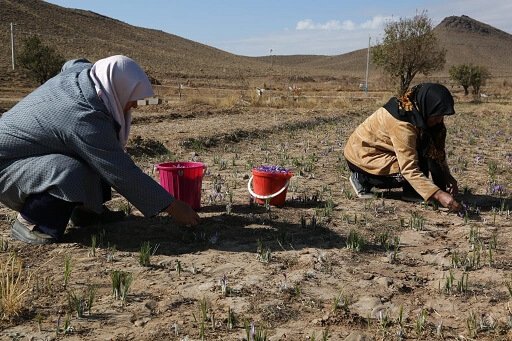On this page, we will try and answer the most common question … “Why is saffron so expensive ?” Then we will explain how Zoetic does things differently … We plough back a sizeable proportion of our profits to support our local farmers, save waste, improve irrigation and reduce our carbon footprint.
Without a doubt, top quality Persian saffron from Iran is one of the world’s costliest food. The price varies depending on the quantity you buy and the country in which you buy it. We have read many articles online claiming that it costs more than gold. However, we have not been able to establish this as a fact.
Unlike gold, a pinch of saffron goes quite a long way. Here at Zoetic, we charge between £6.50 and £9.00 per gram, depending on the quantity purchased.
We are very passionate about eco-friendly farming and fair trade. Above all, sustainability has been one of our biggest challenges. That is to say, we strongly believe in providing for today, whilst managing our land so we don’t compromise it for future generations.
Unfortunately, the problem is this … As the world’s population grows, so does the need for mass production. And this, in turn, puts a huge strain on our scarce natural resources. To clarify, in the case of saffron farming in Iran, this mainly means water.
In short, our saffron is sourced from a collective of small family farmers from a single region in the province of Kerman in Iran. My wife and I come from exactly the same small region. In fact, we know many of the farmers personally and have worked shoulder to shoulder with them
We saw a great opportunity to help these trusted farmers. So we set up a system that would benefit us and them and future generations. Because we have known these farmers personally for many years, we can 100% rely on the premium quality of the saffron they produce. So we are happy to pay more for it.
The higher price means our farmers were able to invest more in a sustainable irrigation system. This yields more crops and at the same time allows them to save water. Because we are paying far more than the average price, the farmers did not need so much land
Time and money was saved because they did not need to convert large areas of scrub into traditional farm fields. Land conservation was, therefore, another very positive impact of us paying a higher price.
This special relationship with the farmers has made our fledgling eco-friendly, fair trade business much easier but there is still much to be done. This is just the start. However, with the right support and hard work, we believe the impact on the local environment will be substantial.
Of course, there is much more to it than we have been able to cover in this short article. But the next time a 10-year-old ask you how saffron is grown, at least you can give them the basics.

As farmers we have been reaping the land for many generations therefore it is our duty to keep mother earth happy to bless the future generations long after we have gone.
The direct footprint is much easier to manage but the challenge is our indirect footprint. Three areas we are working hard to improve on are transportation, waste production and emissions.
Firstly, a good portion of Iranian saffron is exported to Spain, repacked and transported all over Europe. However, we import directly from Iran rather than shipping to the UK via Spain. Consequently, this dramatically cuts our transportation emissions.
After experimenting and gradually improving how saffron is grown, the amount of on-site emissions we now produce is minimal. For example, some producers wastfully dehydrate saffron using electric or vacuum ovens. Microwave drying and in rare cases charcoal fires are other methods used. On the other hand, because we are collective of small farmers in a region which enjoys good weather and sun all year round, our saffron is air-dried.
But probably the most important of the three areas is waste. We decided to use less plastic and more biodegradable materials in our packaging. So, the reduction in the amount of waste has been notable.